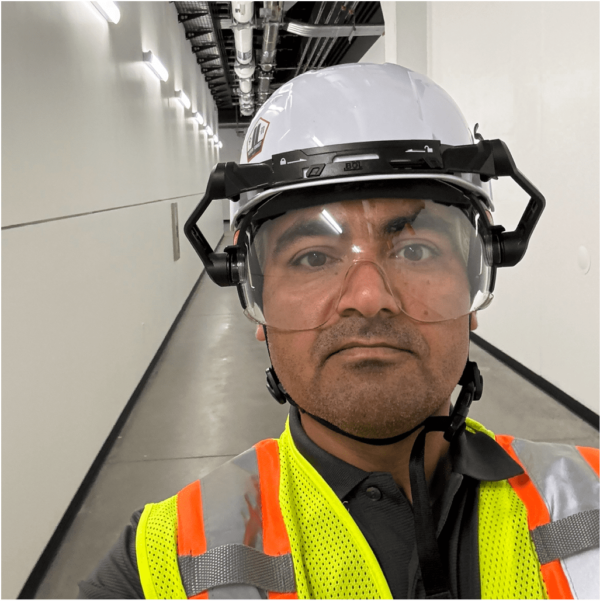
October 22, 2024 | Articles
Walking the Talk: New Vice President, Rail and Transit Gavin Martin

Watch a short video here!
In every construction project, deadlines are critically important to a myriad of project stakeholders and construction professionals. But in the transportation sector, millions of people that depend on the means of transit under construction also become stakeholders. Hill International’s project managers, such as Matthew McMenamin, PE, regularly embrace the challenge of meeting such appreciable deadlines. Matt recently faced such a deadline while working on the San Elijo Lagoon Double Track (SELDT) project in San Diego County, CA.
Since its construction finished in the spring of 2019, the $75.7 million SELDT project has enabled more rapid transit through a portion of the Los Angeles-San Diego-San Luis Obispo Rail Corridor (LOSSAN), the 2nd busiest intercity rail corridor in the U.S. The project, which took place under the purview of the San Diego Association of Governments (SANDAG), the North County Transit District (NCTD), the California Department of Transportation (Caltrans), and the Federal Transit Administration (FTA), provided a second mainline track to a 1.5-mile stretch of single-track rail, and a new concrete and steel bridge over the San Elijo Lagoon. The project is situated about 25 miles north of San Diego and extends between the cities of Encinitas and Solana Beach. Hill International’s Matthew McMenamin provided construction management services as resident engineer on this award-winning project.
The addition of 1.5 miles of double track has created 4.2 miles of continuous double track through the area along the LOSSAN Corridor. Double track allows trains moving in opposite directions to pass without slowing down or stopping, thus enabling more trains and riders to use the tracks daily. Since LOSSAN expects substantial increases in riders and trains by 2030, SELDT will help alleviate coming transit needs.
With over 30 years of industry experience, Matt found the challenge of delivering the project on time a “great experience.” He adds, “This was in no small part due to the committed team of professionals that I was humbled to work with.”
A tenured construction management professional was clearly necessary to address some of the major challenges and constrictions that emerged during SELDT. The team found a particularly challenging obstacle under the proposed railroad berm construction. Matt reports: “An old 30-inch sewer main ran under the existing railroad-grade berm and could not be spanned or graded over due to its fragile state. An adjacent bypass line was supposed to be constructed in time for the old line to be abandoned and the new railroad berm to be constructed. The bypass line contractor was late in constructing the bypass line which delayed the SELDT projected schedule.”
Eventually the new bypass pipe was completed and Matt and his team, through agile planning and workshops with the contractor, were able to account for the unforeseen delay by optimizing the schedule activities and adjusting the allowable work windows. “We all had to do a lot of overnight and weekend work, but we finished the project on time. Unexpected challenges like this are parts of the job,” Matt says, “but quickly adapting to those challenges and achieving success despite them is what we do best.”
Although pressed by time, Matt and his team successfully completed the SELDT project. Matt proudly says: “The SELDT project was one of the most productive and successful projects undertaken in the San Diego corridor of LOSSAN. A lot of long hours went into this success and I’m really thankful to the whole SELDT team for their sacrificed weekends and evenings. It felt good to hit the project’s deadline.” He continues: “This is an actual solution to the problem of creating fast and efficient transportation in Southern California. It was built to be safe and environmentally friendly. The transportation industry needs to be imitating the example set here.”
Share

October 22, 2024 | Articles
Walking the Talk: New Vice President, Rail and Transit Gavin Martin

October 18, 2024 | Articles
Future-Proofing Projects: Janakiram VVS Talks India’s Digital Transformation

October 14, 2024 | Articles
Weathering the Storms Part 3: Resiliency Support for Investor-Owned Utilities

October 12, 2024 | Articles
Growing Greener Healthcare: The SNF Global Health Initiative

October 9, 2024 | Articles

October 7, 2024 | Articles
Weathering the Storms Part 2: Leveraging Public Funding for Utility Resiliency

September 30, 2024 | Articles

September 23, 2024 | Articles
Independent Safety Assessments for Rail Projects: Weighing Benefits and Challenges

September 19, 2024 | Articles
Hill Shares Industry Insights to Help Ukrainian Contractors Rebuild

September 19, 2024 | Articles